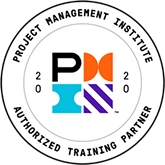Business Analysts Bridge the Business Gap
By Charlie Orosz
A  dramatic change is taking place in the way businesses operate, and the business analyst is leading the charge.
dramatic change is taking place in the way businesses operate, and the business analyst is leading the charge.
The business analyst (or business process analyst) is the vital link between business executives and IT staff, translating business goals into IT requirements and communicating the requirements to IT. That’s no small matter. According to research firm Meta Group, “Poor requirements gathering, analysis and management are directly responsible for 70 to 80 percent of project failures.”
 Until recently, IT requirements typically originated in the IT department. In some companies they still do. When IT is not given clearly defined business expectations, not surprisingly it develops solutions that fail to meet expectations. By improving communication between business stakeholders and developers in IT, the business analyst reduces costs and delays.
Until recently, IT requirements typically originated in the IT department. In some companies they still do. When IT is not given clearly defined business expectations, not surprisingly it develops solutions that fail to meet expectations. By improving communication between business stakeholders and developers in IT, the business analyst reduces costs and delays.
Given the benefits they provide, it’s no wonder that demand for business process analysts — and business analyst training — is growing. That’s just one reason the position is ideal for experienced IT staff who want to retrain. Business analysts are in a position that cannot be outsourced, and they have skills that are transferable to almost any industry. Programmers seeking to expand their roles, quality assurance professionals and IT project managers are among those who often make ideal business analysts.
Is business analyst training right for you? A more in-depth look at what’s involved can help you decide.
Define project scope:
The starting point for any business analyst is to define a project’s purpose and goals. The business analyst must first document a project’s scope, identifying all people or departments involved and any external and system resources needed.
Define requirements:
The analyst typically uses many different techniques for gathering information, including a review of existing documentation, interviews, online research, surveys, questionnaires and personal observations. The business analyst must have advanced interviewing skills, including the ability to dig deep with follow-up questions, interview people with different points of view and draw conclusions. Vague business objectives result in vague requirements, which can doom a project.
Document requirements:Vague business objectives result in vague requirements, which can doom a project.
How requirements are documented and formatted is as important as how they are defined. The business analyst must be able to communicate fluently in two languages — business language and technical language. The analyst typically uses Unified Modeling Language (UML) — the current industry object-orientation standard — to prepare requirements and diagrams.
Identify solutions:
The business analyst must thoroughly understand business objectives and software functionality to ensure that the identified solution is fully aligned with the needs of the business. The analyst should work directly with the internal team if it has the capabilities to develop the right solution or play a key role in identifying and choosing the right vendor. The business process analyst should also be able to weigh solution costs against expected benefits and build support for implementation.
Assess the solution:
Even after the solution is developed, the business process analyst remains involved, reviewing designs to ensure that they will satisfy requirements. The analyst typically uses structured verification and validation techniques, and use-case scenario testing to ensure results.
Because they bridge the gap between IT managers and business executives, business analysts should remain in constant demand, even when the high-tech job market is soft and jobs are being outsourced.
For more information on this topic, as well as how Corporate Education Group can help power your organization’s performance, contact us via email or call 1.800.288.7246 (US only) or +1.978.649.8200. You can also use our Information Request Form!



- ©2025 Corporate Education Group, operated by CEG Operating Company, LLC. All Rights Reserved.
Privacy Policy | Terms and Conditions - PMI®, PMP®, CAPM®, PgMP®, PMBOK®; and the PMI®; Registered Education Provider logo are registered trademarks of the Project Management Institute, Inc. CBAP® and IIBA® are registered trademarks of International Institute of Business Analysis. All other trademarks mentioned on this site are property of their respective owners. All rights reserved. CEG is an approved Authorized Partner within the Blanchard Authorized Partner Program and is licensed to market, sell, and train SLII®.